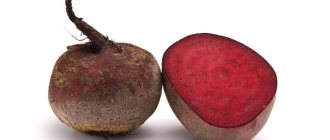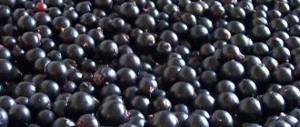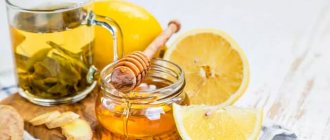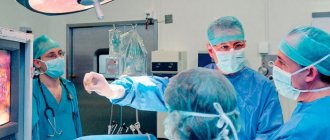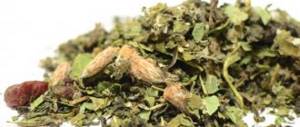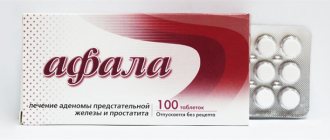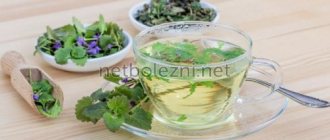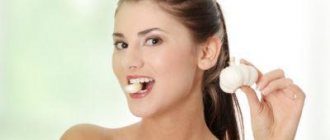Good day!
My name is Khalisat Suleymanova - I am a herbalist. At the age of 28, I cured myself of uterine cancer with herbs (read more about my experience of recovery and why I became a herbalist here: My story). Before being treated using traditional methods described on the Internet, please consult with a specialist and your doctor! This will save your time and money, since the diseases are different, the herbs and treatment methods are different, and there are also concomitant diseases, contraindications, complications, and so on. There is nothing to add yet, but if you need help in selecting herbs and treatment methods, you can find me at my contacts: Khalisat SuleymanovaInstagram page: instagram.com/fitoterapevt1
Telephone: 8
Email: [email protected]
I consult for free.
Hirudotherapy is a method of therapy with medicinal leeches, which are used throughout the course according to an individual scheme. Leeches for kidney disease are used in combination with other methods of treatment, for example, propolis is effective for kidney disease and herbal infusions and decoctions. This allows you to achieve good results, eliminate inflammation, stabilize blood circulation, increase the body's defenses and prevent the formation of blood clots.
The history of hirudotherapy
The unusual medical practice of treating with leeches appeared at the dawn of civilization - the method was used in Ancient Egypt, Greece and India. From the southern countries, hirudotherapy gradually spread to Europe and became extremely popular there. Until the 19th century, in most of Eurasia, including Russia, leeches were considered one of the main methods of treatment and were used for literally all diseases. Even high-ranking persons were treated with the properties of hirudotherapy.
In the 20th century, treatment with medical worms was briefly forgotten, and more modern methods of combating various diseases appeared. But currently, hirudotherapy is again gaining popularity, although it bears little resemblance to the procedure used 100 or more years ago.
Important! Modern hirudotherapy is one of the methods of traditional medicine; only certified specialists can carry out treatment with beneficial leeches.
When looking for a good doctor, you should not pay attention to healers without education - their actions can be harmful.
How often is hirudotherapy used in gynecology?
Gynecologists rarely give referrals for hirudotherapy sessions. Leech treatment is used in gynecology as an adjuvant in complex therapy or as a preventive procedure. The method has proven itself well in solving such problems:
- relieving inflammation in endometritis;
- increased patency of the fallopian tubes;
- fight against adhesions in the fallopian tubes;
- fight against fibroids and fibroids;
- increased muscle activity of the uterus;
- stimulation of endometrial growth.
Men most often go to hirudotherapy sessions to:
- improve sperm quality;
- relieve inflammation of the prostate gland.
Leech enzymes slow down the growth of tumors, reduce pain and discomfort in inflamed areas.
What types of leeches can treat
For treatment in hirudotherapy, only 3 specific useful varieties of leeches are used:
- eastern,
- pharmacy,
- medicinal.
There are several hundred worms from this subclass, but other types cannot be used for treatment. In addition, only worms grown in special biofactories are suitable for use for medical purposes - they are completely sterile. Worms caught in their natural habitat often carry infections and can cause great harm.
Is hirudotherapy used in children?
According to hirudotherapists, the use of medicinal leeches is indicated for children from the first days of life.
- Medicinal leeches should be used with great caution in children. The child must be constantly under the supervision of a doctor.
- In newborns, one leech is usually used. With age, their number increases to 1-3. In older children and adolescents, the number of leeches is closer to that used in adults.
- Usually, no problems arise with the use of medicinal leeches in children under 3 years of age. As the child gets older, he begins to understand what is happening to him and may react violently negatively to the procedure. The task of the hirudotherapist is to find a common language with the child.
Diseases in childhood that can be treated with leeches:
- Consequences of birth injuries.
- Perinatal encephalopathy (PEP).
- Cerebral palsy (CP).
- Motor disorders.
- Hirudotherapy helps improve physical and mental development.
- Increased intracranial pressure.
- Diseases of the ENT organs.
- Disorders of the autonomic nervous system.
- Enuresis.
- Leeches are used to improve a child’s social adaptation and improve school performance.
- Frequent colds.
- Adenoids.
- Nasal congestion, nasal tone.
- In adolescents, the reason for using hirudotherapy is often vegetative-vascular dystonia and disorders of the digestive system.
What are the benefits of leeches?
To understand why the properties of ancient healing are still used in medicine, it is necessary to consider the effect of medicinal worms on the body.
- By attaching itself to a person’s body, a medicinal leech injects the enzyme hirudin, a natural substance that thins the blood, into his blood. This reduces the load on the circulatory system, which is of great benefit for a number of diseases.
- In hirudotherapy, beneficial worms are applied to the patient’s body not in random places, but in special points - the same ones that are used during acupuncture. This triggers biologically active processes in the body that have a beneficial effect on the condition of the body.
- In response to a bite, the human body exhibits a response - the immune system begins to work actively. Substances that help eliminate inflammation, infections and viruses are produced, metabolism is accelerated - these properties also bring undoubted benefits.
The benefits and harms of medicinal leeches complement modern methods of treating diseases and allow one to achieve improved results.
When are leeches used?
Part of a comprehensive treatment
Clinical trial result
Indications for hirudotherapy:
- problems of the cardiovascular system (coronary heart disease, hypertension I-III, heart failure degrees I-II);
- respiratory diseases (chronic sinusitis and bronchitis, pneumonia, bronchial asthma);
- dysfunction of the gastrointestinal tract, gastritis, pancreatitis;
- diseases of the liver and biliary tract;
- neurological problems (neuroses, injuries of the central nervous system and peripheral nerves, multiple sclerosis);
- gynecological diseases;
- problems with blood vessels (thrombophlebitis, obliterating endarteritis, hemorrhoids);
- diseases of the urinary system (enuresis, prostatitis, chronic cystitis);
- skin problems (neurodermatitis, eczema, psoriasis);
- glaucoma;
- prevention of postoperative complications (lymphostasis, thrombosis, infiltrates);
- endocrine diseases (menopause, obesity, hyperthyroidism);
- scleroderma, systemic lupus erythematosus;
- dental problems (periodontitis, caries, periodontal disease);
- arthrosis and arthritis.
Hemophilia
Contraindications:
- anemia;
- leukemia;
- diseases with blood clotting disorders;
- erosive gastritis;
- stomach and duodenal ulcers;
- gastrointestinal tumors;
- subacute bacterial endocarditis;
- significant loss of body weight;
- pregnancy;
- individual intolerance to the secretion of the salivary glands of the medicinal leech;
- hypotension;
- tuberculosis (active forms);
- alcohol intoxication;
- condition after surgery on the spine and brain.
These contraindications are the result of numerous clinical studies.
Storage vessels
Indications and points for placing leeches
Basically, the beneficial properties of hirudotherapy are used for diseases that are accompanied by impaired blood circulation. Leeches bring good results for joint ailments and vein diseases, and poor metabolism; the benefits of hirudotherapy in gynecology are widely known.
The number of worms required for the procedure and the points for their installation are determined by the specifics of the disease.
For osteochondrosis and arthrosis
Hirudotherapy demonstrates beneficial properties in the treatment of osteochondrosis and arthrosis. The cause of these diseases is often insufficient blood circulation, uneven physical activity, injuries and metabolic failures. The benefit of leeches for osteochondrosis is that the treatment properties significantly reduce discomfort. Thanks to the procedures, blood flow in the diseased area improves, pain and swelling go away, and healthy joint mobility returns.
As a rule, 4-5 beneficial worms are placed around the diseased joint, depending on the severity of the disease. To achieve the effect, several sessions are required, and the exact number is determined by the hirudotherapist during the initial diagnosis.
For spinal hernias
Spinal hernias are accompanied by excessive tension in the muscles surrounding the deformed vertebra and additional compression. The benefits of hirudotherapy for spinal hernia are manifested in the fact that leeches help relax tissue and improve blood circulation in the problem part of the body. Thanks to this, it is possible to achieve improvement and slow down the development of the disease.
When treating worms, they are placed slightly below and above the deformed vertebra - in the spaces between adjacent discs. It is advisable to combine the beneficial properties of hirudotherapy with other treatment methods - gentle physical exercise, massage, manual therapy.
For varicose veins
The benefits of leeches for varicose veins are very high - they improve the physical condition and appearance of the legs. Hirudotherapy is particularly effective in the early stages of the disease; in such cases, 2-3 courses of treatment in several sessions are sufficient to delay the development of varicose veins for a long time. After treatment with leeches, protruding veins become less noticeable, purple and red stars under the skin disappear, swelling and a feeling of heaviness in the legs go away.
To achieve a beneficial effect, the worms are placed in close proximity to the protruding veins - usually in a checkerboard pattern. The number of worms depends on the severity of the disease - the more pronounced varicose veins are, the more leeches can be used per procedure.
For kidney diseases
The benefits of leech saliva are manifested in kidney diseases, even quite severe ones. Hirudotherapy is used for chronic renal failure, as well as to treat the consequences of mechanical injuries.
A specialist can install leeches in different areas. For example, for glomerulonephritis, 2-3 worms are placed on the lower back, in the chest area or above the thyroid gland. And in case of chronic renal failure and after injuries - mainly in the lumbar region and above the liver, but 7-8 pieces each.
For nerve diseases
Neurological diseases are often caused by impaired blood supply to certain areas of the body. Vivid examples are radiculitis and neuralgia, stroke and myopathy, vegetative-vascular dystonia. Treatment with leeches can completely eliminate these diseases or contribute to significant relief of their symptoms.
The installation points of the worms depend on the characteristics of the disease. Typically, worms are placed along the line of the spine or a separate affected nerve to ensure high-quality blood flow in exactly the right area of the body.
For prostatitis
The health benefits of leeches for men lie primarily in the fact that worms are used to treat prostatitis. In this case, the effect of hirudotherapy is explained by the fact that leeches suck blood from a certain area of the body and reduce its volume, thereby improving circulation. In addition, the benefits of leeches for men are also manifested in the medicinal properties of the saliva of these worms; it relieves inflammation and reduces pain.
Leeches are installed not only in the area of the coccyx and pubis, but also in other places - above the liver or solar plexus. The optimal location is determined by a hirudotherapist who understands the relationships between biologically active points of the body.
For thrombophlebitis
Thrombophlebitis at any stage is one of the direct indications for the use of hirudotherapy. To thin the blood and reduce its number, the worms are placed at a distance of about 1 cm from the affected vein, and the procedure brings quick results. The treatment can be used in chronic and acute cases of the disease - if hirudotherapy is carried out correctly, its properties will not cause harm.
For diabetes
Against the background of diabetes mellitus, especially with type 2 of the disease, tissue resistance to insulin gradually develops. The harm lies not only in the fact that changes in blood glucose levels become more frequent, but also in the fact that metabolism is significantly disrupted and serious complications arise.
The properties of leech treatment in this case bring a positive effect, since they normalize metabolism and restore insulin sensitivity to tissues. As a rule, leeches are placed on the tailbone and in the solar plexus area, where biologically active zones are located.
For hemorrhoids
The benefits of leeches for women and men are in demand for hemorrhoids - if there are external hemorrhoids. The treatment properties help relieve inflammation and reduce the size of nodes, preventing the occurrence of blood clots.
Place beneficial worms on the tailbone or around the anus. Leeches are rarely placed directly on nodes - this can cause harm. Since the affected area is very small, usually no more than 3-4 worms are used per session.
For liver diseases
For hepatitis, inflammation of the gallbladder and cirrhosis, leeches on the liver are beneficial; they improve blood supply to diseased organs, help cleanse tissues and relieve the inflammatory process. Beneficial worms are usually placed directly above the liver and on the stomach, on the sacrum and in the sternum area; leeches on the navel will be beneficial.
In case of liver damage, no more than 4 leeches are used in the first sessions of hirudotherapy, subsequently their number is increased to improve the effect. In total, sessions are carried out at least twice a week, and the treatment course consists of 10-12 sessions. If necessary, treatment is repeated after a month's break.
For hypertension
Leeches are beneficial for blood pressure - due to the fact that beneficial worms suck out blood, attacks of hypertension are relieved almost instantly. And with prolonged treatment, high blood pressure can be completely stabilized, since the properties of hirudotherapy contribute to the dilation of blood vessels.
Beneficial worms are most often placed behind the ears, in the depression under the 6th vertebra in the neck or in the tailbone area. During treatment for hypertension, short-term bleeding may occur, it passes quickly and does not cause harm.
In dentistry
The benefits of leeches for humans are used for dental ailments - inflammatory periodontitis, alveolitis, periostitis. Also, the properties of medicinal worms are beneficial for inflammation of the trigeminal nerve or salivary glands. Leeches are installed directly on the gums and mucous membranes of the oral cavity; the session usually takes no more than 10 minutes.
Because beneficial leeches relieve excess blood pressure in inflamed tissues, swelling and pain are quickly reduced. The use of hirudotherapy is justified in cases where it is not possible to use more radical methods of treatment or their effectiveness is in doubt.
In gynecology
The benefits and harms of leeches are widely used in gynecology; most often they are installed externally on the sacrum, lower abdomen and in the solar plexus area, but sometimes they are even injected inside the body. Near the reproductive organs of women there are a huge number of vessels and small capillaries; accordingly, treatment with leeches brings a quick and noticeable effect. The benefit of hirudotherapy for women is that leeches improve the condition of inflammatory diseases of the uterus and appendages, congestion in the pelvic organs, and hormonal disorders.
Since the blood supply to the pelvis improves during leech treatment, leeches provide infertility benefits for women. If used along with procedural and pharmacological treatments, reproductive abilities will significantly improve.
In cosmetology
The benefits of leeches for women's health are also evident when caring for external beauty. Hirudotherapy allows you to eliminate serious skin defects - pimples, blackheads and boils; treatment with leeches makes scars less noticeable. The benefit of hirudotherapy for the face is that leeches improve blood supply to the hair follicles under the scalp, and, therefore, restore the volume and strength of the curls.
An important advantage of cosmetological hirudotherapy is that its properties are suitable for women of all ages. Leeches on the face will be beneficial for oily and dry skin, wrinkles and lack of elasticity. Beneficial worms are usually placed directly on problem areas - near the nose, on the forehead, under the eyes, on the temples and behind the ears.
Important! Although placing leeches on the face has undoubted beneficial properties, it must be remembered that bite marks will be visible within a couple of days.
For obesity and cellulite
The benefits of leeches for women's health are evident in the fact that hirudotherapy promotes weight loss. The effect is direct and very fast - leeches start the process of destruction of adipose tissue and normalize subcutaneous blood flow. Toxins and waste are quickly removed from the body, resulting in weight loss, and the skin becomes healthier and more attractive in appearance.
Medical worms are placed directly into areas where adipose tissue accumulates.
Advice! To achieve a beneficial effect, hirudotherapy must be combined with exercise and proper nutrition. Otherwise, there will be no harm from its properties, but they will bring little benefit.
The effectiveness of hirudotherapy
The healing effect of hirudotherapy is exerted by enzymes released along with the saliva of leeches. The most significant and effective among them is hirudin. It resolves blood clots, relieves pain, reduces inflammation, and normalizes the functioning of the immune system.
After hirudotherapy sessions, the patient begins to feel better, the blood supply to the pelvic area is normalized, the blood is thinned, and the risk of thrombotic blockage of blood vessels or arteries is reduced. In case of kidney stones, leeches are also placed so that, under the influence of enzymes, the stone formations dissolve and are removed from the body naturally, without radical surgical intervention.
To achieve a better result, renal failure and other kidney diseases are treated simultaneously with taking medications prescribed by the doctor. The hirudotherapy treatment regimen is compiled individually, taking into account the stage and form of the patient’s disease. On average, the duration of treatment is from 10 to 12 sessions. How many individuals to place at the same time, how often to conduct a session, which placement points to choose - all this is decided by the hirudotherapist. If you are looking for an experienced doctor, we invite you to our hirudotherapy clinic in Moscow.
Preparation for the procedure
In order for treatment with leeches not to cause harm, it is necessary to carefully prepare for it:
- First of all, you should choose a good medical center that offers the services of licensed hirudotherapists, and make sure of its technical equipment, in particular, sterility during the procedure is of utmost importance.
- Immediately before the first treatment session, it is necessary to undergo clinical tests and make sure that there are no strict contraindications to treatment.
- You must give up alcohol 2 days before the procedure, and smoking is prohibited on the day of the session.
The body must be clean before hirudotherapy; it should not be treated with creams, lotions and oils, and the use of deodorants and perfume is not recommended. At the same time, there is no need to take a shower before the session; it is best to wash yourself the day before and then not use cosmetics and hygiene products.
Prices for hirudotherapy for kidney disease
The price of the course consists of the cost of each session, which is influenced by the number of leeches used. Since each organism has individual characteristics, there is no standard price list.
The hirudotherapist draws up a treatment program and determines the number of leeches after making a diagnosis and receiving test results.
Hirudotherapy procedure for kidney diseases from 1500 rubles
The cost of hirudotherapy for kidney diseases starts from 1,500 rubles
Hirudotherapy in the treatment of kidney diseases, placement of 3 leeches – 1500 rubles
Hirudotherapy in the treatment of kidney diseases, placement of 5 leeches – 2500 rubles
Treatment of kidney diseases with leeches from 1500 rubles
Treatment procedure for kidney diseases: placement of 3 leeches - 1500 rubles
Features and treatment regimen with leeches
The number of hirudotherapy sessions is determined individually in each case, but usually treatment consists of 10-12 procedures. Sessions look like this:
- a sterile leech is removed from a container placed in the refrigerator and inserted into a special syringe,
- Using a syringe, the leech is directed onto the skin at the injection site and covered with gauze as soon as the worm is attached,
- if the worm does not want to attach itself, the skin is lightly pierced and a leech is applied to the protruding drop of blood.
The patient must remain stationary throughout the entire beneficial procedure. The session takes about 45 minutes, at the end of which the well-fed leech falls off on its own or will be removed by a specialist using salt or alcohol.
A fresh wound at the site of suction will bleed for several hours, there is no harm or danger in this. The wound must be washed regularly; the bite can be disinfected with hydrogen peroxide.
Physiotherapy for cystitis
The use of physiotherapeutic procedures ensures a faster and more complete recovery of the bladder mucosa, successfully relieves inflammation, and normalizes urine tests. After the first sessions, pain is completely relieved and the urge to urinate is reduced. By the 5-6th session of exposure, the disease subsides, bleeding of the bladder mucosa stops, blood circulation normalizes, pain when going to the toilet “little by little” and discomfort stops.
Is it possible to give leeches to children?
Since hirudotherapy has many contraindications, treatment with beneficial worms is not used for young children. However, from the age of 14, if you have serious illnesses, you can use leeches for teenagers.
Attention! Since under unfavorable circumstances leeches can cause particular harm to children’s health, only a pediatrician should decide on the advisability of hirudotherapy.
Autohemotherapy for cystitis
Injecting the patient with her own blood, autohemotherapy, leads to stimulation of the body's defenses - the person begins to more actively fight chronic infections. In this case, blood is taken from the patient’s vein and injected deep intramuscularly into the buttock. At the same time, the body’s defenses are activated, the composition and ratio of blood elements changes, and hematopoiesis and metabolism are stimulated. As a result of these processes, positive changes occur in the patient's condition. The use of injections of the patient’s own blood is especially indicated in cases of chronic inflammation of the bladder against the background of persistent drug allergies, when this “folk method” is the only option for correcting immunity.
Since the therapeutic effect of autohemotherapy is nonspecific and affects various systems of the body, the list of problems for which such a transfusion of one’s own blood can have a therapeutic effect is quite wide. In this list, among various gynecological pathologies, cystitis occupies one of the first places.
Contraindications: • Cardiovascular diseases (heart attack, stroke); • Active tuberculosis; • Pregnancy and breastfeeding; • Mental illness and borderline disorders; • Epilepsy; • Oncology of any localization; • Functional kidney failure; • Severe arrhythmia.
Harm of treatment with leeches
In some cases, the effect of hirudotherapy can be negative, although the procedure causes harm mainly when the rules for its implementation are violated. In particular, side effects of leech treatment include:
- allergic reactions, especially often occurring when worms are installed in the liver area,
- heavy bleeding
- the formation of bruises and extensive hematomas at the sites of bites,
- infection - this occurs when sterility is violated or when wound care rules are neglected.
Also, after the procedure, some patients experience enlarged lymph nodes. This is unpleasant, but most often it does not pose a danger and quickly goes away on its own.
Possible complications
During hirudotherapy, slight pain from the bite is felt. There may be redness, swelling of the skin, and mild itching. Normally, side effects disappear after 2–3 sessions, but a small scar forms. The scar will disappear within a year or less (depending on the sensitivity of the skin).
The procedure lowers hemoglobin and red blood cell levels, but their levels can be corrected quite easily with a good diet rich in iron.
At the Consultative Diagnostic Center (formerly the National Diagnostic Center), we have been performing procedures using leeches for many years.
Make an appointment with a neurologist and come to us for treatment.
Reviews from doctors
Petrova Antonina Fedorovna, 52 years old, St. Petersburg I have been working as a phlebologist for more than 25 years and I know that hirudotherapy helps with varicose veins no worse than many medications. Provided that the treatment is carried out by a qualified doctor, leeches in combination with other treatment methods give an excellent effect. Denisova Elena Aleksandrovna, 37 years old, Vladimir As a gynecologist, I often encounter the problem of female infertility. Treatment regimens are different in all cases, but if the patient’s health allows and there are no contraindications, I additionally recommend hirudotherapy sessions. Practice shows that leeches significantly improve the condition of the reproductive organs.
Hirudotherapy for cystitis
One of the effective methods for treating urological diseases is hirudotherapy. The use of leeches for cystitis is due to their ability to improve blood microcirculation and relieve congestion. However, the alternative method has a number of contraindications, so before the session you should consult with your doctor to prevent the condition from worsening.
Patient reviews
Anichkina Elena Vladimirovna, 28 years old, Moscow I have long heard about leeches in gynecology. And when difficulties arose when planning a child, it was hirudotherapy for infertility that helped to gradually solve the problem, now I already have a 3-year-old daughter. Currently I use leeches for weight loss, they help to quickly restore slimness to problem areas. Startseva Anna Vitalievna, 42 years old, Kaluga Hirudotherapy for cervical osteochondrosis saved me when neck pain began. Since then, I have become convinced of the healing properties of these worms, and now I regularly apply leeches to my face for wrinkles. I know that treating hemorrhoids with leeches is effective - when a delicate problem arose, the sessions helped to quickly get rid of the discomfort.
Did you find this article useful? Not really
Where to place or points for hirudotherapy
First principle
Wherever you place a leech, it will still be useful (except for places where they should not be placed if you do not have the appropriate medical education). There is no need to place leeches on areas of large venous vessels, places with thin skin, the face, or in body cavities.
Principle two
There are special points and zones for influencing the entire body. Points of general action: coccyx, navel, perineum, liver, pancreas area, points on the chakras. If we want to achieve maximum success in treating a local process, we also work with points and areas of general action.
Principle three
In addition to general points, we can act directly on the patient locally. We place it where it hurts the most, or where there is the main problem for which hirudotherapy is performed
Cystitis or pyelonephritis - how to distinguish these diseases?
Have you been trying to cure PROSTATITIS for many years?
Head of the Institute: “You will be amazed at how easy it is to cure prostatitis by taking it every day...
Read more "
The anatomy of the human urinary system is represented by the urethra, bladder, ureters and kidneys. The functions of these organs are to regulate the amount and composition of fluid in the body and remove waste products and excess fluid.
Disturbances in the functioning of the above organs lead to serious complications in the functioning of the whole organism.
A common form of pathology of the urinary system are diseases of the bladder and kidneys, mainly of infectious etiology, cystitis and pyelonephritis.
Symptoms
How to distinguish cystitis from pyelonephritis? There are a number of signs by which a preliminary diagnosis of a particular disease can be made.
However, the most accurate picture will emerge when a series of laboratory tests necessary to make a diagnosis are carried out.
When collecting a primary history, you should pay attention to the following complaints:
- With cystitis, a change in temperature is not typical, but with inflammation of the kidneys, the main symptoms will be a change in temperature towards high levels, accompanied by chills, and intoxication, manifested in the form of weakness, headache, nausea.
- With inflammation of the bladder, the pain is localized above the pubis, and with kidney disease, a person feels pain in the lumbar region.
- Cystitis and pyelonephritis, the symptoms of which are basically the same, are manifested by a frequent urge to urinate, accompanied by unpleasant sensations in the process. There is pain at the end of urination.
- Urine tests reveal leukocytes and bacteria. The appearance of blood in the urine is characterized by cystitis. Pyelonephritis in urine tests has a high degree of protein expression.
Diagnostics
Let's look at how cystitis or pyelonephritis is diagnosed based on laboratory data. We have already understood how to distinguish these diseases by symptoms.
For cystitis, the following laboratory tests are carried out and instrumental diagnostic methods are used:
- General blood test. Often no changes are observed, a moderate inflammatory reaction is possible;
- General urine analysis. The analysis contains leukocytes, pus, bacteria, epithelial cells, as a result of which it loses its transparency and becomes cloudy. Possible presence of uric acid and protein salts;
- Urinalysis according to Nechiporenko. With bladder disease, the number of red blood cells, leukocytes, and cylinders increases significantly;
- Cystoscopy. Examination of the lower urinary tract using a cystoscope. This procedure is not performed in the acute stage of the disease.
To accurately diagnose pyelonephritis, the patient is prescribed:
- General blood analysis. The analysis contains an increased number of leukocytes, an increased erythrocyte sedimentation rate (ESR), which indicates inflammatory processes in the body;
- General urine analysis. The analysis shows pronounced leukocyturia, red blood cells, protein, and casts are present. Urine loses transparency and becomes cloudy;
- Test according to Nechiporenko. Allows you to determine the content of leukocytes, erythrocytes, and casts in the urine;
- Zimnitsky's test. The essence of the method is to collect urine during the day under normal water conditions. Urine is collected in portions every three hours. At the end of the day, samples are analyzed to determine relative density. With pyelonephritis, the concentrating ability of the kidneys decreases. At the same time, the rhythm of urine excretion is determined. The normal ratio of daytime to nighttime diuresis is 4:1. In kidney disease, the ratio is disrupted;
- Ultrasound diagnostics of the kidneys (ultrasound). With pyelonephritis, thickening of the walls of the pelvis and calyces is noted. Kidney mobility is reduced.
Additional diagnostic measures include x-ray examination methods and endoscopy.
| Treatment of pyelonephritis |
| Chronic pyelonephritis |
| What is pyelonephritis? Symptoms and signs. |
| Treatment of pyelonephritis with folk remedies |
We looked at how to distinguish pyelonephritis from cystitis based on laboratory and instrumental data. Let's look at whether treatment is different for these diseases.
IT IS IMPORTANT TO KNOW! D. Pushkar told how to defeat prostatitis at home...
Such a pleasant treatment for prostatitis for 147 rubles...
Treatment
How to treat pyelonephritis and cystitis? Since both pathological processes are inflammatory diseases, treatment is carried out mainly with antibiotics.
There are several rules for prescribing and taking antibiotics:
- the course should be prescribed in accordance with the diagnosis, taking into account the existing concomitant pathology;
- the action of the antibiotic must be targeted, taking into account the pathogen;
- an effective result is achieved with regular, systematic use of the drug;
- The antibiotic should be taken at the same time;
- Along with antibiotics, probiotics should also be taken to maintain the body's microflora.
Treatment of cystitis and treatment of pyelonephritis are prescribed by a doctor. No initiative in this matter is allowed in order to avoid the transition of acute forms of the disease to chronic ones.
Chronic pyelonephritis and cystitis are quite serious diseases that can lead to disruption of the functioning of the entire body. Acute cystitis, if not treated properly, can develop into chronic cystitis. Further, an infection from the bladder through the ascending tract can reach the kidneys, which will cause acute pyelonephritis, which in turn can become chronic. The next stage is chronic renal failure.
For cystitis, the course of antibiotics is no more than 5 days. If the symptoms of the disease do not go away after the course, the sensitivity of the microflora to antibiotics should be determined by culture of urine for microflora and, replacing the drug, repeat the course.
For pyelonephritis, bed rest is prescribed, a gentle diet, drinking regimen, antibiotics, and detoxification therapy are prescribed. Treatment is mainly carried out in a hospital setting. In rare cases, if there is no effect from conservative treatment, patients are prescribed surgery.
Prevention
Prevention of cystitis and pyelonephritis consists of sanitizing inflammatory foci present in the body, maintaining personal hygiene, and strengthening the immune system.
Eat right, exercise, exercise.
To avoid relapse of the disease, the doctor may recommend taking immunomodulatory drugs or taking herbal teas sold in pharmacies and containing a balanced composition of herbs.
Phytotherapy
During an exacerbation of cystitis, it is better to use preparations that contain herbs containing several components with anti-inflammatory, antibacterial, restorative, and enveloping effects. Doctors recommend herbal teas No. 72, No. 73, No. 74, No. 75.
Treatment with herbs for recurrent cystitis continues for 2 months.
Patients with pyelonephritis (without urinary passage disturbance) are prescribed cranberry juice, juices, and herbal decoctions that have an antiseptic and diuretic effect. Ingredients of collection No. 5: wild rosemary shoots, calendula flowers, peppermint leaves, yarrow herb, rose hips.
You can prepare a medicinal tea containing: birch leaf, bearberry leaf, horsetail herb, dandelion root, juniper fruit, lingonberry leaf, flax seed, licorice root.
Brief pathophysiological information
In an acute condition, nephrotic syndrome may develop. This is a symptom complex characterized by massive proteinuria (more than 3 g of protein per day), hypo- and dysproteinemia, hyperlipidemia, hypercholesterolemia, widespread edema and edema of the serous cavities.
The main danger with nephrotic syndrome is thromboembolic complications. In patients with membranous glomerulonephritis, thrombosis of the renal vein often occurs, and thrombosis of the deep veins of the leg often occurs. Another dangerous complication is pulmonary embolism. Another danger for patients with nephrotic syndrome is infectious complications. Increased sensitivity to bacterial infection is caused by a decrease in the level of immunoglobulins A and G due to their loss in the urine.
The complex effect of hirudotherapy improves microcirculation in the damaged kidneys, has an anti-inflammatory effect, and prevents the development of thrombosis. By supporting the immune system, the biologically active substances contained in the saliva of leeches prevent the development of infectious complications in kidney diseases.

